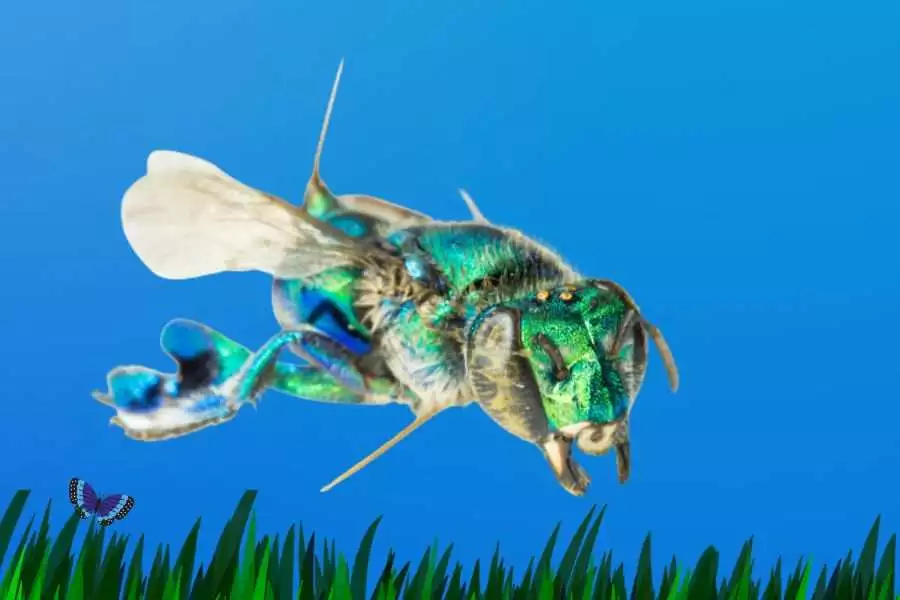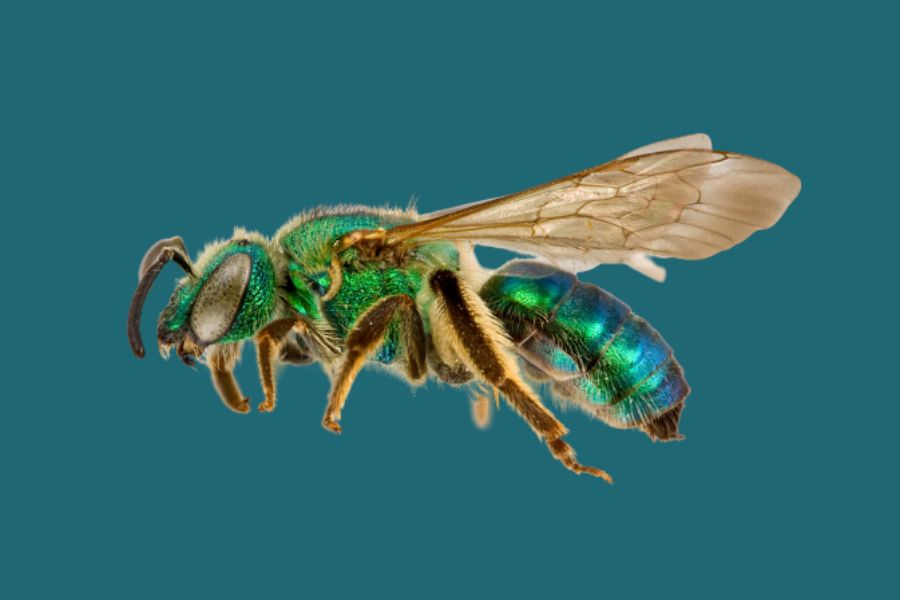Discover the exciting small animal world of Green Bees in Florida. From eco-friendly hives to natural honey production, learn how these green bees are helping the environment.
Green Bees in Florida
Green bees are a group of bees mostly found in Florida and other parts of the world. These species have unique bright metallic green to greenish-brown coloring that’s why they are named “green bees”.
The Green Orchid bee is one of the most unique species of green bee in Florida.
1. The Green Orchid Bee:

The green orchid bee is also known as the Euglossa dilemma or dilemma orchid bee. The green orchid bee is a species of solitary euglossine bee native to Florida in the United States.
It was first detected in 2003, in Florida. As per the study, there were two cryptic species, but one new species present in Florida.
Description:
Green Orchid Bees can grow up to 1.3 m in length. They have dark-colored wings and the female has pollen baskets on her hind legs. The male green orchid has joints on his hind legs.
The female has a sting that can be used more than 1 time but which is not painful to humans. Orchid bees have longer proboscises to gather flowers and nectar with their long corolla tubes.
Habitat or Location:
The Euglossa Dilemma is a native of Central America. They originated from Mexico and arrived in Florida. Now you can also see this species of bees in Florida.
It was first discovered in Broward County. Most of the time they are found in hot dry habitats like pastures, parks, degraded forests, and gardens.
Breeding Process:
The male attracts females by releasing his fragrance and fanning his wings. Not the male, the Female builds a solitary nest to lay eggs.
The females feed their babies pollen and nectar, which they bring from flowers.
2. Agapostemon:

Other common green bees in Florida. Agapostemon is solitary ground nesters.
Females have an entirely green body, but males have yellow and black stripes on their legs and abdomen.
Importance of Green Bees in Florida:

Green bees played a significant role in Florida’s ecosystem by pollinating a wide range of plant species.
They are very important for pollinating crops like blueberries, watermelons, and strawberries. Green bees are also important in pollinating native plant species in Florida.
Threats of Green Bees:
Green bees are of very crucial importance in Florida’s ecosystem, as well as they face a number of threats in Florida.
One of the biggest threats to habitat loss including big buildings and agricultural development. Green bees are now became vulnerable.
How to protect them:
To protect green bees in Florida, we need to restore their natural habitats, such as wetlands and prairies.
Individuals can also play a big role in protecting green bees by taking steps to create pollinator-friendly habitats in their gardens or yards. This can include planting native plants, reducing pesticide use, and providing nesting sites for bees.
FAQs:
What are the green bees in Florida?
The Green Orchid bee is one of the most unique species of green bee in Florida.
Other common green bees in Florida. Agapostemon is solitary ground nesters.
Is a green bee poisonous?
Male green bees are nonpoisonous but females are poisonous.
Do green orchid bees make honey?
No, Green orchid bees are solitary, they do not make honey.
Are green orchid bees native to Florida?
The Euglossa Dilemma (Green Orchid Bees) is a native of Central America. The green orchid bee is a species of solitary euglossine bee native to Florida in the United States.
Where do green bees come from?
They originated from Mexico and arrived in Florida. Now you can also see this species of bees in Florida.
Conclusion:
In conclusion, green bees are an important part of Florida’s ecosystem while they face a number of threats, there are many steps that can be taken to protect these valuable bee species in Florida.
